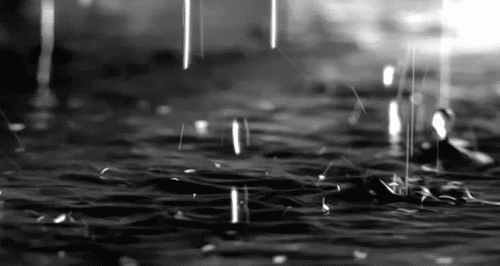
FAQ: 38 questions and answers about our #StormwaterProgram, next steps, fees, and more
Posted by Jared Shepherd
- 12269 Views
- September 24th, 2015
- in Miscellaneous
- 25 Comments
Since the September 15 Ohio Supreme Court ruling, we have already begun responding to common questions about the program restart, fees, credits, cost-sharing, and more. We revisited some of the questions that existed prior to the program’s suspension in 2013 and added a few we’ve started answering in recent days.
Updated September 25, 2015 / March 31, 2016
Background and basics: About the program
Why is regional stormwater management necessary?
Stormwater-related problems must be addressed regionally because what happens in one community can affect another. Often one community addresses a problem and may inadvertently move that problem downstream to the next community. Managing stormwater flows is necessary to protect our natural resources, reduce streambank erosion and decrease the pollutants in streams and rivers. If these issues are not addressed today, the problems will continue to get worse and will be more costly to solve in the future.
What are common stormwater-related problems?
Stormwater-related problems include the flooding of streets that stops traffic from moving, or the collapse of streambanks from erosion that causes bridges to crumble or roads to fail. These problems occur at one time or another in every community in our service area.
What will the Regional Stormwater Management Program do?
The Regional Stormwater Management Program will address flooding, streambank erosion and water quality issues in our waterways throughout Northeast Ohio which have been ignored for many years. This will be accomplished through planning, maintenance and construction of stormwater-related projects.
What is being done now to manage stormwater?
Some communities are taking steps individually to reduce the impacts of stormwater. However, each community can generally only work within their own borders to solve problems. This does not work well because stormwater issues are bigger than any one community. These issues are regional, much of the flow from one community drains into another community. Adding to the problem is that there is not a regional agency coordinating stormwater efforts between all communities. The result is that one community can “solve” a stormwater problem and may inadvertently move that problem to the next downstream community.
What type of stormwater projects under the Regional Stormwater Management Program are in place at this time?
There is a list of early action projects and plans for maintenance activities that the Sewer District will do, which include removing debris, repairing streams to protect roads and fixing failing dams. The District will restart master planning and inspection and maintenance activities on the approximately 450 miles of streams, rivers, and creeks in our service area.
Why should the Sewer District coordinate and lead the regional stormwater management effort?
The Sewer District has been the leader in clean water for over 40 years, protecting the environment and the health of over 1 million residents in 62 Greater Cleveland communities. As an established regional organization, the Sewer District is uniquely positioned to address the issues of stormwater because the problems cross community boundaries requiring multi-jurisdictional solutions and coordination.
Are other cities charging for stormwater?
Yes, there are about 1,000 cities around the country and many cities and counties in Ohio, including Columbus, Cincinnati, Toledo, and Lake County who assess a dedicated stormwater fee.
Closer to home: Stormwater management in my neighborhood
Why should I care about stormwater issues?
Clean water is one of our region’s most valuable resources. It affects your drinking water, your overall quality of life, your property values, and your community. Protecting our clean water is not something that can be done by one person or one community alone. A regional stormwater management program is a critical component in protecting our clean water.
How will stormwater management benefit the community that I live in?
The Regional Stormwater Management Program is structured to address flooding, erosion, and debris issues along area streams, which in turn will protect Lake Erie, our region’s most valuable natural resource. More locally, communities can benefit by taking advantage of the Community Cost-Share Program in which 25% of the stormwater revenue collected within a community will be available for its own municipal stormwater-management projects such as debris removal or flooding abatement.
Who will be responsible for flooded basements when the Sewer District stormwater charges are added to my bill?
Determining the causes of basement flooding is a complex process. In the majority of cases addressing basement flooding is the responsibility of the property owner and caused by local or property-specific issues. When these problems occur, the Sewer District will work with local communities and homeowners to determine if the cause is stormwater-related and if the proposed solution is within the responsibility of the Regional Stormwater Management Program. We will also work with community officials to determine the causes and potential solutions.
I have no storm sewer on my property and the stormwater goes to the stream. Why will I have to pay a Sewer District stormwater fee?
Stormwater management encompasses more than storm sewers in our region. Stormwater runs off all hard surfaces – driveways, rooftops, patios – on all properties, and makes its way to streams, either by flowing over land or through pipes. Increases in stormwater runoff from these hard surfaces causes flooding, erosion and water-quality problems, and the Regional Stormwater Management Program will address these problems.
My neighbor’s yard is flooding my yard. What are you going to do about this?
While the Regional Stormwater Management Program will address regional stream flooding, erosion and water quality issues, problems with flooding at adjacent properties will need to be addressed by the homeowner. Your community may also have suggestions so please contact your community representatives. The Sewer District can offer advice and suggestions, as well, so please contact the NEORSD Watershed Team Leader for your community. A listing of Watershed Team Leaders can be found under Contact Us at http://www.neorsd.org/stormwater
Fees and billing: Rates, credits, and cost-saving
How is the Stormwater Fee calculated?
The fee is based on Equivalent Residential Units or ERU which equals 3,000 square feet of impervious area. Impervious area is a surface that prevents or slows water from soaking into the ground. Examples of impervious areas are rooftops, traveled gravel, concrete or asphalt paved areas, private roads, driveways, parking lots and patios. You can view your property’s ERU calculation at neorsd.org/FindMyFee
How is impervious area measured?
Impervious area is measured for each parcel by digitizing impervious features such as rooftops, driveways, and parking lots from aerial photographs gathered from Cuyahoga, Lorain, Lake, and Summit counties. Our FeeFinder shows you the regional stormwater management program service area boundary and your fee calculation.
How would we pay for addressing these stormwater problems?
Since there are no dedicated federal or state funds available to address regional stormwater problems, local communities and regional agencies are financially responsible for fixing stormwater problems and funding stormwater programs. Monies can come from a dedicated stormwater fee that is typically based on the amount of impervious surfaces, such as pavement and rooftops.
In an effort to assess a fair and reasonable fee, those with more impervious surfaces, such as large parking lots, will be charged more under the Regional Stormwater Management Program because the stormwater fee is based on the amount of hard surface on any particular parcel. Credits that reduce the stormwater fee will be considered to recognize individual efforts made to reduce a property’s impact. For more on the Stormwater Fee Credit Program, download a copy of the previously approved (2012) Regional Stormwater Management Program credit manual.
Couldn’t the current sewer bill charges pay for the Regional Stormwater Management Program?
Our current sewer revenue is used for a variety of services, including the collection and treatment of sanitary sewage, monitoring water quality, and control of combined sewer overflows. The services we will provide under the Regional Stormwater Management Program require a separate, dedicated revenue source to accomplish all of the Program’s objectives.
Who is exempt from the Stormwater Fee?
There are a few types of parcels that are exempt from the Stormwater Fee. These are public roads and highways, public airport runways and taxiways, railroad rights-of-way, many city-owned properties, and public and not-for-profit cemeteries.
What will be the cost per quarter for a typical homeowner?
When stormwater billing resumes in the second half of 2016, the Stormwater Fee will range from $3.09 per month, $5.15 per month or $9.27 per month depending on the amount of impervious area per residence. Account holders that qualify for the Homestead program will pay a stormwater fee of $2.07 per month. The Stormwater Fee may increase each year based on funding needs necessary to continue to effectively implement the Regional Stormwater Management Program.
What will the rate be for commercial properties?
When stormwater billing resumes in the second half of 2016, the Stormwater Fee for commercial properties will be $5.15 per Equivalent Residential Unit (ERU) which equals 3,000 square feet of impervious area. The total Stormwater Fee for commercial properties depends on the amount of impervious area in the properties’ parcel. For commercial customers with more than 10 ERUs, or 30,000 square feet of impervious surface on a single parcel, their Stormwater Fee will reflect a reduction due to the declining block fee. The declining block fee applies a progressively lower ERU charge as the number of ERUs increases on a parcel over 10 ERUs.
Are there any discounts or cost-saving programs for stormwater?
For those residential customers who qualify, the Sewer District offers Homestead, Affordability and Crisis Assistance programs. The Sewer District also offers various Stormwater Fee credits to both residential and non-residential customers for stormwater control measures on their properties. In addition, the District offers two specific Stormwater-Fee saving programs for qualifying schools – these are Education credits (Title V, Section 5.0804c) and a discounted stormwater rate for schools with greater than 25% of students qualifying for the Free Lunch program (Title V, Section 5.0713). These programs are detailed as noted in the previously approved Title V Stormwater Management Code. You can also find descriptions in the complete Credit Manual.
We already pay a stormwater fee to our county or city. Why do I need to pay this?
Fees paid to counties or cities will be used to improve their local stormwater systems. This is often for storm sewer or catch basin maintenance, both very necessary activities which are not actions covered by the Regional Stormwater Management Program (RSMP). These local efforts do not resolve large regional issues such as stream flooding and erosion that impact infrastructure across Northeast Ohio. The RSMP’s Community Cost-Share Program can help defray the local costs of these efforts through reimbursement grants directed to municipal governments.
Will the savings program only be for homeowner-occupied residences?
Yes. The Homestead and Affordability rates qualifying criteria is for owner-occupied residences which is the same as the sanitary sewer savings programs.
What do I have to do to qualify for a credit on the Stormwater Fee?
Customers can receive a reduction in their Stormwater Fee by implementing District-approved stormwater control measures and completing the related credit applications. There are various stormwater control measures that residential customers or businesses can implement to qualify to receive stormwater fee credits. To learn more about the credit program, you may request a credit application that outlines the required criteria to receive a credit, or you can download a PDF.
How much is the stormwater credit?
Residential customers, who institute one of the District-approved stormwater control measures, can apply to receive a flat reduction of 25% of the stormwater fee. Residential and non-residential customers can apply for the stormwater quality credit which is up to 25% reduction and/or the stormwater quantity credit which is up to 75% reduction. Schools can also apply for the education credit which is a 25% reduction. The total credit any customer could receive is 100%.
How do I apply for a credit?
The residential Stormwater Credit Manual and application can be downloaded from our website of www.neorsd.org/residentialcredits. Or we can mail you the information.
Will unoccupied/vacant properties be charged for stormwater?
Undeveloped properties with no structures or impervious area will not be charged. Vacant or unoccupied properties with structures or impervious area will be charged. The fee will be assessed to the property owner.
I have a well and a septic tank; why am I being billed at all?
Having a well or septic tank is not related to stormwater runoff from your property. Parcels with wells and septic systems still have stormwater runoff from impervious surfaces such as rooftops and driveways. This runoff eventually goes into the regional stormwater system and has to be effectively managed, which is why a stormwater fee is charged in these cases.
I’m not in your service area; how do you justify billing me at all?
If you receive a stormwater fee from the District, you are in our service area and your community has agreed to be included in the District’s service area.
You are charging a fixed charge for sanitary sewer and now a stormwater fee. Why and what’s the difference?
Each of the fees has a unique purpose. The fixed charge relates to sanitary sewer and compensates for unmetered water that seeps or leaks into our region’s aging sewer infrastructure and is treated by our wastewater treatment plants. The stormwater fee will provide regional stormwater management services that will address flooding, erosion and water quality in our area streams and river.
What happens if I don’t pay the stormwater fee?
Failure to pay the stormwater fee will result in the Sewer District placing your account in collection status. If payment is not received after account has been placed in collection status, the Sewer District may take one or more of the following steps: stop water service to the account holder, place a lien on the applicable parcel, and/or take other steps as are reasonable to collect the unpaid debt.
Are you calculating my ERUs including the non-paved surfaces where we store landscaping materials or industrial equipment?
These areas are considered in the ERU calculation because they are “developed” areas. According to Chapter 2 of Title V, the Sewer District’s Stormwater Management Code, impervious surfaces include “developed areas that either prevent or significantly slow the infiltration of water into the ground.” This includes roof tops, driveways, traveled gravel, as well as areas that have been graded, filled, or used to store equipment or materials. You can use our FeeFinder to see your property’s impervious surface area calculation.
Why is my gravel driveway, brick patio, or deck included in the impervious surface?
Gravel driveways, brick patios, and decks are included in impervious surface calculations because they meet the definition of impervious surfaces. According to Section 5.0212 of the Title V Stormwater Management Code, the definition of impervious surfaces is “developed surfaces that either prevent or significantly slow the infiltration of water into the ground compared to the manner that such water entered the ground prior to development, or which cause water to run off in greater quantities or at an increased rate of flow than that present prior to development. Impervious surfaces shall include, without limitation, rooftops, traveled gravel areas, asphalt or concrete paved areas, private access roads, driveways and parking lots, and patio areas.”
What happens to…?: Updates to items leftover from 2013
Are you going to back bill for Stormwater Fees during the time the Regional Stormwater Management Program was on hold?
No.
The Sewer District will not bill customers for the time between shut
down and restart of the Regional Stormwater Management Program.
I had an approved stormwater fee credit before the Regional Stormwater Management Program stopped. Will that existing credit be applied to the stormwater fee once it restarts?
Yes. If you had an approved credit from the Sewer District prior to the program halting, that approved credit will be applied to your stormwater fee. Sewer District staff will contact you about submitting necessary renewal forms as a condition of the credit.
What about my stormwater fee credit application that was under review when the Regional Stormwater Management Program and fee ended in September 2013, is that credit application still valid?
Yes. Sewer District staff will review your application and contact you if additional information is necessary to complete that review.
If my stormwater fee was under review per my request, will you reopen the review?
Yes. The Sewer District will re-open all pending Stormwater Billing Inquiries. Analysis of each inquiry will be made and results of the inquiry will be communicated to the customer. If it is determined that a refund is warranted, adjustments to customer accounts will be made accordingly.
Fee vs. tax: Why the difference?
This is a new tax. Don’t we have to vote on this?
According to the Ohio Supreme Court, the Stormwater Fee is not a tax. The Ohio Supreme Court ruled on September 15, 2015 the District has the authority to charge a fee to support the services of the Regional Stormwater Management Program.
How can you start a program without total consensus from all the municipalities within your service area?
The Ohio Supreme Court ruled that the District had the authority to proceed with its program. Consent from each municipality is not required.

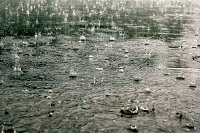
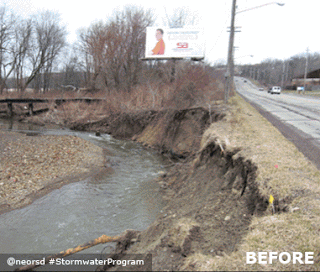
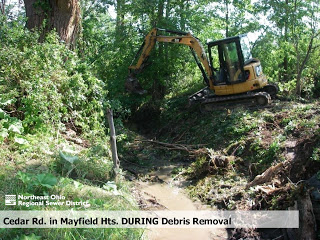
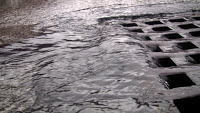

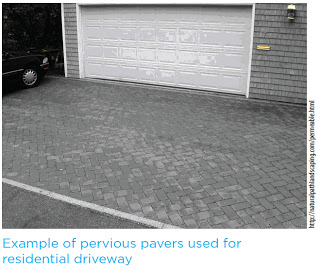
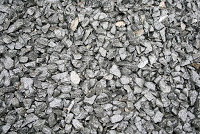
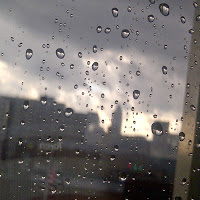

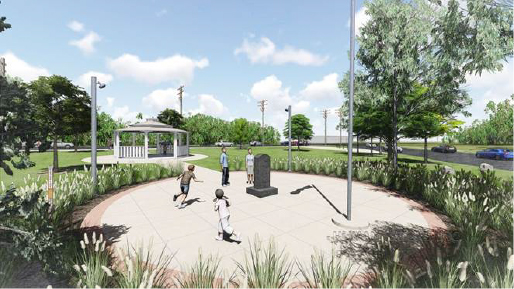
Comments ( 25 )
Here is my question I don't see answered.
In the case of sewer fees, these are used to maintain the treatment plants and collection system. So everyone who pays is a user of the system. How am I guaranteed that the stormwater "system" I use will receive benefits?
For example, I live in the Rocky River watershed. I have seen very little proposed for the Rocky River system. Yet I am now paying for the stormwater that winds up there. If little or nothing is to be done there, how is it fair that Rocky River watershed customers will pay for improvements to streams like Mill Creek, West Creek, Doan Brook, and so on that our stormwater will never touch?
I have to imagine Rocky River presents a particular problem as most of the watershed lies outside of NEORSD service territory.
I have no problem paying for it, but I don't think it is unreasonable to ask for our money's worth, fixing the problems our individual stormwater is causing.
The answer is: this is a total, unmitigated, undemocratic RIP OFF of the public. If you do nothing and say nothing, the evil will continue. What evil requires is that good people do nothing to stop it. The NEORSD is completely corrupt, evil and out to rip off the Ohio customer.
Anonymous, thanks for your patience. I spoke with one of our Watershed Team Leaders who oversees work in the Rocky River region. He offers 4 specific efforts that will have an impact there, but we always look at the Northeast Ohio region as a whole when assessing projects and opportunities. If you have further questions, let us know.
>>>
Thanks for your question. The Regional Stormwater Management Program includes several components that will address stormwater management in the Rocky River watershed. These include:
(1) Stormwater Master Planning – We will complete detailed Stormwater Master Plans for the Rocky River, Cuyahoga River, Lake Erie Direct Tributaries (Euclid Creek, Doan Brook, others) and the Chagrin River watersheds. We will better understand how these individuals watersheds are functioning, the root causes of current problems, and best ways to minimize future flooding, erosion, and water quality problems. We had already begun master planning in the Rocky River watershed, specifically in the subwatershed of Abram Creek when the Regional Stormwater Management Program was enjoined in September 2013. We look to continue this work as the program restarts.
(2) Inspection and Maintenance – Our inspection and maintenance crews will restart their preventive maintenance routes on locations along the over 70 miles of the Rocky River and other large streams that constitute the regional stream system with known and reoccurring flooding and erosion problems. When the program was previously in operation, crews removed debris blockages from Baldwin Creek and Plum Creek, removed excess sediment buildup at a stormwater basin at Baldwin Creek, and had additional projects already planned for Plum Creek.
(3) Construction – Before our stormwater program was shut down we had several projects advancing in the Rocky River watershed, either into the planning or design phases.
(4) Land Protection – You are correct that much of the Rocky River watershed is outside of our service area but we will go outside our service area in a watershed to work on projects where it makes the most sense for solving stormwater problems. For example we have supported the conservation of the Rocky River headwaters in Hinckley. From 2010-2016 we will have protected 171 total acres, over 5,000 ft of headwater streams, and approximately 20 acres of wetlands within the East Branch of the Rocky River alone.
How do I get my Property re-evaluated for impervious surface
Thanks for your question. The best place to start is our FeeFinder map to review what your current impervious area estimate may be. From there, you can follow up with our Customer Service staff directly 216 881-8247.
If the intent of this "fee" / "tax" (call it what you want) is truly to control stormwater run-off then why is there no "credit" back to homeowners for the pervious space on their property. Many homeowners have large yards or other undeveloped areas on their property that are beneficial to stormwater management and this program should provide incentive to maintain or increase that. The approach being taken appears to be aimed at maximizing revenue instead of encouraging responsible development. A better approach to obtain the stated objectives would be one which bases fees on a percentage of total property covered by impervious space.
Thanks for your comment. The fee is just as you recommend in your closing statement. The fee is assessed based on the amount of impervious surface on your property. If the square footage used in our calculations includes pavement that qualifies as pervious, then that can be attributed as a credit for a possible fee discount. You can review your property status on our fee map at http://neorsd.org/FindMyFee
Sorry, here's the link.
No, the fee is not applied as suggested in my closing statement. Allow me to elaborate… if a given lot is 40,000 sq. ft. and contains 4,000 sq. ft. of impervious surface the environment impact is significantly less than the same 4,000 sq. ft. of impervious surface on a 10,000 sq. ft. lot. In the former case, 10% of the lot would be impervious surfaces whereas in the latter case 40% of the lot would be impervious. This is the percentage to which I'm referring. A fee based on only on the amount of impervious surface on a property without consideration for the amount of pervious surface on the property is not a percentage – nor is it a proper way to evaluate a property's overall impact on stormwater run-off.
Notice how the thieves did not respond to your last clarification. They only respond to what is convenient and to their benefit only. Difficult and uncomfortable questions(for them) are never answered.
I received a credit under the old system for having a large evaporation pond ("rain garden") and rain barrels. I had to do a lot of sketches and submit photos to get this credit. Did I now have to resubmit all that paperwork?
Good question. If your credit application was approved previously, you do not need to resubmit. We will send you a notice when it is time to renew the credit. Credits are good for three years, so you may receive a renewal notice this year or next depending on your credit approval date. If you do not know the status of your previous submission, please call us at (216) 881-6600 and ask to speak to a Watershed Team Leader.
If I use rain barrels to take care of 100% of the rain coming off my roof then my ERU calculated value should be reduced. If it were originally assessed at 1.00 beforehand ,then at the very least it should be set at 0.50. I (THAT'S MEEEE NOT YOUUUUU, GOT IT??) AM taking care of 100% of the problem FOR YOU and yet all I get is a 25% discount?? The minute I use an approved mitigation method for run off you still keep billing my roof sq. footage as though it is impermeable. IT SHOULD BE effectively the same as permeable if I can prove I can mitigate a 1-year storm or better yet several successive ones. Ever wonder why your facebook ratings are abysmal?? Probably not. Most corrupt official don't care what the public thinks of them. (undoubtedly you wont address that here or anywhere for that matter)
Why do elevated wooden decks qualify as impervious surfaces? The rain just trickles down around the boards and into the ground below.
It is obvious that this program is unfair to many property owners. Those who have large lots and forested areas are given no credit even though they pay substantial property taxes on those large lots. A large tree consumes a bathtub of water per day, yet you get no credit for the remediation that your trees provide. The burden is always on the property owner and never on the agency that is picking his pocket. Just try filing the paperwork to get an exemption! Not only is it onerous, you will have to do it repeatedly to maintain the exemption. What a waste! There is a tacit assumption made that any rooftop or driveway or deck causes runoff that Neorsd must remediate. This is patently false yet Neorsd now has the approval of the Ohio Supreme court since this is not considered a tax but merely a fee (reminds me of the Obama Care argument). Right and wrong, fair and unfair have no standing. This is a matter for our legislature to put an end to. The over-reach of agencies at all levels of government is the responsibility of legislatures at all levels of government to reign in. This is one of the major problems in our country today. Neorsd should be required to prove what they are billing you for before they are able to bill you! As it is set up now, Neorsd hits you with a sledge hammer and you must scramble to shield yourself with paperwork to minimize your bruising. Good luck folks until our politicians act to make these agencies responsible! They grow like hungry animals by feeding on you! Any responsible politicians in our legislature?
Thanks for taking the time to comment. You can review and verify the square footage calculated in your impervious surface area measurements at http://neorsd.org/findmefee If you would like to discuss your measurements or property, we'd be happy to speak with you. You can reach us at (216) 881-8247.
I live in Summit County and receive zero services from you (my sewage goes to Summit County treatment plant). How is it then that I am in your sewer district? No matter how you try to justify it there is no logical answer to that. As for your board, I as a Summit County resident and voter have absolutely no representation. You may respond that the board has three suburban mayors appointed to it yet not a single board member is answerable to any voter in Summit County nor is any member a resident of Summit County. You come down here, and take your monthly fee/tax, the vast majority of which is spent in Cuyahoga County not in Summit. I guess we are supposed to be grateful that Judge Pokorney (also not answerable to any voter in Summit County) ruled that you had to spend 25% of the money locally. How generous of him! I seriously doubt you are doing even that. We are just your little cash cow down here. You sweep in, take our money and spend it in Cuyahoga County. What's not to like if you are are Cuyahoga County resident? Free money from the suckers in Summit county who can't do anything about it and reap no benefit from it.
Second!
In one of NEORSD's replies above it is stated: "For commercial customers with more than 10 ERUs, or 30,000 square feet of impervious surface on a single parcel, their Stormwater Fee will reflect a reduction due to the declining block fee. The declining block fee applies a progressively lower ERU charge as the number of ERUs increases on a parcel over 10 ERUs." How is the fee calculated for parcels over 10 ERU's? I cannot find this in your fee schedule. Thank you.
Good question. It's not outlined in the abbreviated fee schedule but can be found in the complete policy, page 20, 5.0707(e).
Mmm. This does not seem to be taken into account with your Fee Finder Map. For example, try this address: 4820 E 71st St, Cuyahoga Heights, Ohio, 44125. This is a non-residential parcel with 162.40 ERU's- well over the base of 10. Yet the calculated fee = 162.40 X $5.15 = $836.36. No discount given. Am I missing something?
I live in a 1,675 square foot condo and see I'm listed as Tier 2 (2,000 to 4,000 square feet.) I do have a small deck and patio, that may put me around 2,000 square feet or so. I was wondering, how are the driveways and roads in condo developments handled in terms of who's paying for the storm water fee for these? Our road is considered "private" and we thus pay to maintain it as an association. Condo owners aren't responsible for the outside, such as the driveway, so I was curious to know how this is calculated. Thank you.
Thanks for your question. I have forwarded it to a member of our stormwater team, I'll offer their response as soon as I have it available.
My development has a storm water retention pond and I never see the water level exceed the overflow sewer. Why do I need to pay a fee for water runoff that is retained in a pond?
Since this is a regional program, all residents contribute to solutions to these extensive problems. Customers who live in a subdivision with its own storm basin may qualify for the Stormwater Quantity and/or Stormwater Quality credits. Detailed information and application forms for these credits can be found in the comprehensive Stormwater Fee Credit Manual at http://neorsd.org/CreditManual